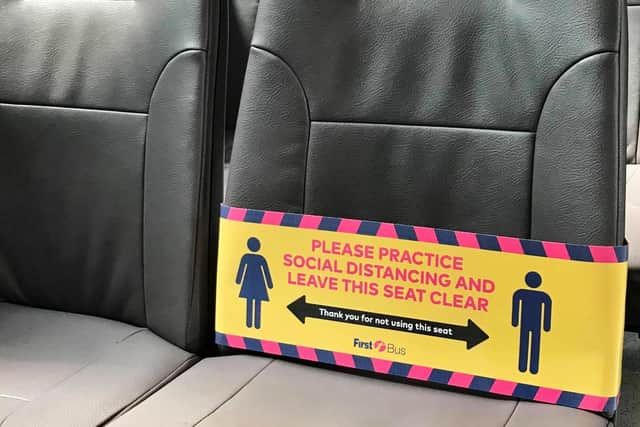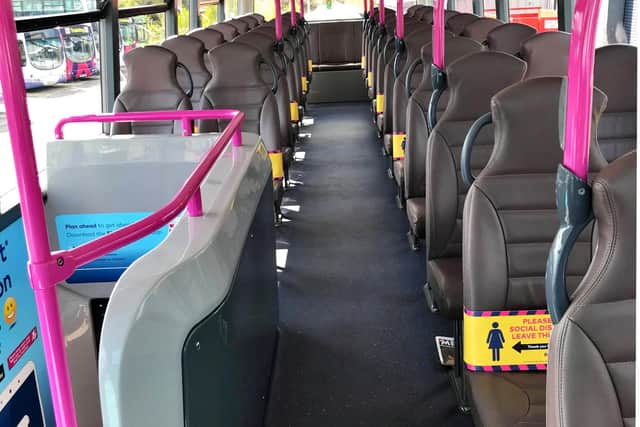How do you feel about returning to public transport? - Alastair Dalton


In normal times, we are encouraged to take public transport to get to work - and one in seven Scots previously travelled that way.
But the signs are that it might now be the form of transport we should avoid once lockdown restrictions north of the Border are eased.
Advertisement
Hide AdAdvertisement
Hide AdScottish ministers have still to publish their plans, and they may differ from those in England, but Prime Minister Boris Johnson has already urged those returning to work there to drive, cycle or walk instead.


The big problem for mass transit is exactly that - carrying large numbers of people at density. However, capacity could be cut to as little as 10 per cent of normal in some cases, and 20 per cent on at least some ScotRail trains.
But some people will have no option, such as the many, especially in cities, with no access to a car, or those commuting too far for walking or cycling to be feasible.
I’ve spoken to several train and bus operators who are grappling with the problem of how to maximise the number of passengers they can carry safely.
Bus firms are looking at a range of options, some even considering the viability of physically removing seats. Installing screens between rows of seats has also been proposed.
What seems more likely is some seats being taped off, but 2m distancing will be a challenge when buses are only about 2.5m wide.
One operator has told me that is not feasible, and face coverings are the answer, which could increase capacity to 40-80 per cent.
Advertisement
Hide AdAdvertisement
Hide AdThe prospect of fewer seats available than demand has prompted fears of anger of passengers being barred from boarding a three-quarters empty bus.
I’m told this could be a particular problem in rural areas and where services are infrequent.
Even waiting at busy city bus stops could be problematic should 2m distancing be required.
If you were to join the end of an elongated peak-hour queue, you might find yourself so far away as to be unable to see the number of the bus as it arrived.
Train travel could prove even more problematic, especially at larger stations where passengers could face complicated queuing systems.
Persuading workers and their employers not to travel at bus peak hours will be a big ask.
ScotRail’s trains on its flagship main line between Edinburgh and Glasgow may be able to accommodate fewer than 100 passengers each compared to their normal capacity of more than 500.
Getting on and off will be more tricky to stay distanced, perhaps with different doors for those boarding and alighting. Markers are already being added to platforms to show how far apart passengers will need to stand.
Advertisement
Hide AdAdvertisement
Hide AdOn longer-distance trains, reservations will be encouraged, with capacity reduced to about 25 per cent of normal and fewer bargain fares available so as not to encourage travel.
The big question is how many people will seek to return to public transport when they can.
Some will continue to work from home and others will switch to other modes because of health fears. But many won’t have the option.
Ministers will want to ease the potential pressure on public transport by encouraging walking and cycling while also reducing the massive levels of extra public support, which has doubled for rail firms.
Tricky times lie ahead.
A message from the Editor:
Thank you for reading this story on our website.
While I have your attention, I also have an important request to make of you.
With the coronavirus lockdown having a major impact on many of our advertisers - and consequently the revenue we receive - we are more reliant than ever on you taking out a digital subscription.
Subscribe to scotsman.com and enjoy unlimited access to Scottish news and information online and on our app.
With a digital subscription, you can read more than 5 articles, see fewer ads, enjoy faster load times, and get access to exclusive newsletters and content.
Advertisement
Hide AdAdvertisement
Hide AdVisit https://www.scotsman.com/subscriptions now to sign up.
Our journalism costs money and we rely on advertising, print and digital revenues to help to support them.
By supporting us, we are able to support you in providing trusted, fact-checked content for this website.
Joy Yates
Editorial Director
Comments
Want to join the conversation? Please or to comment on this article.